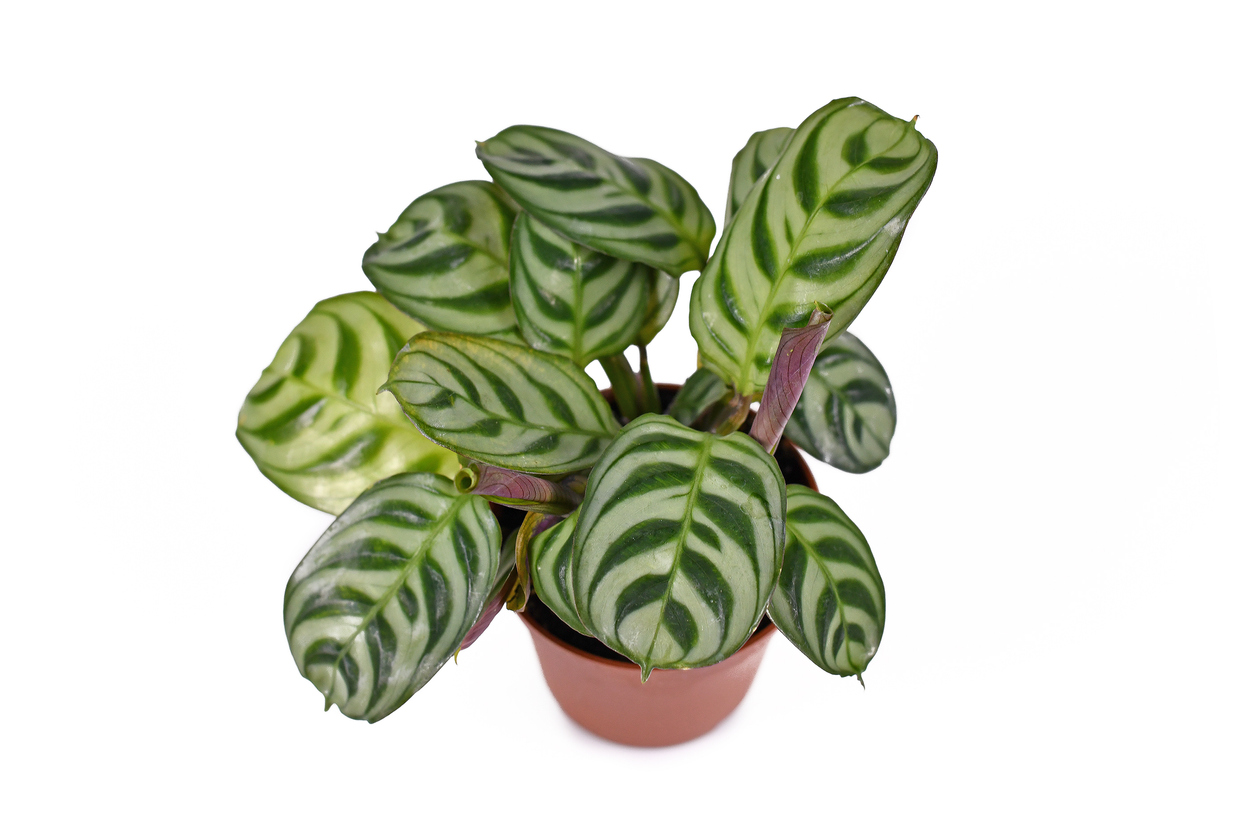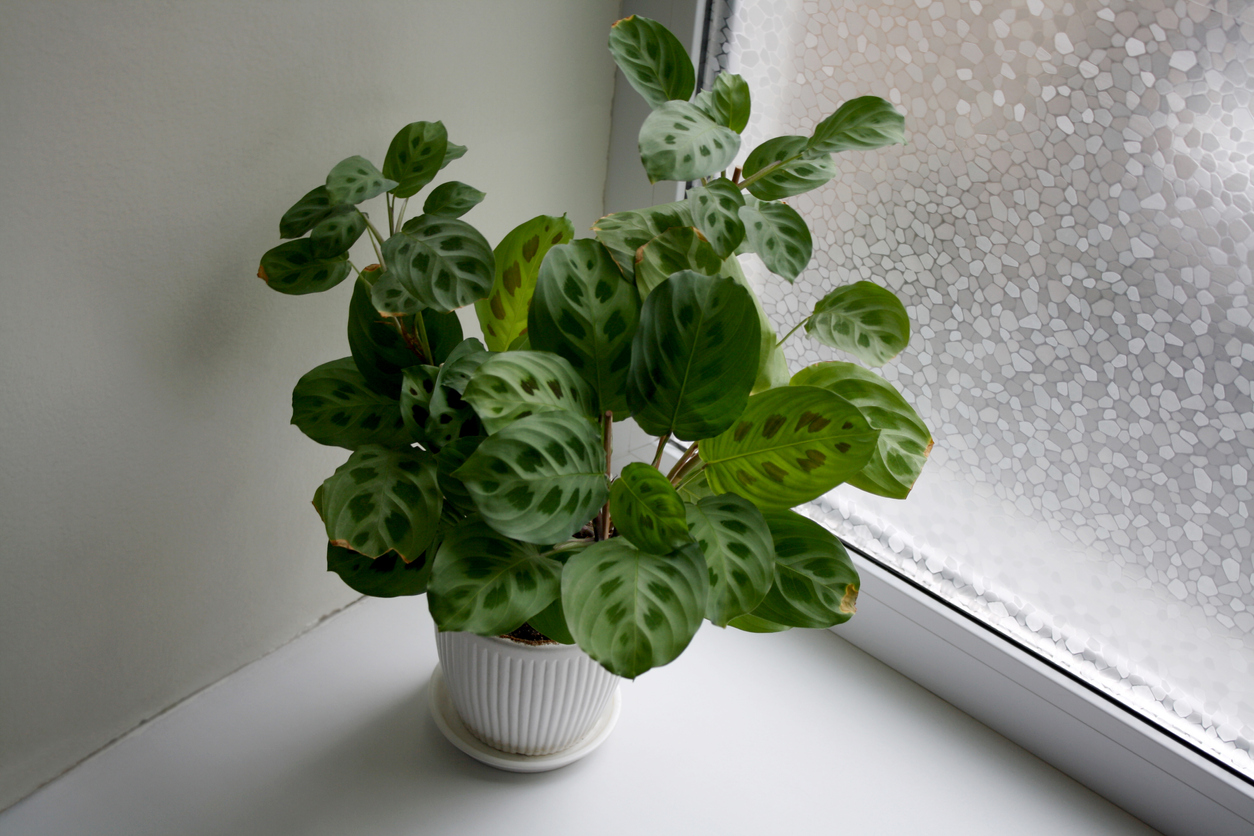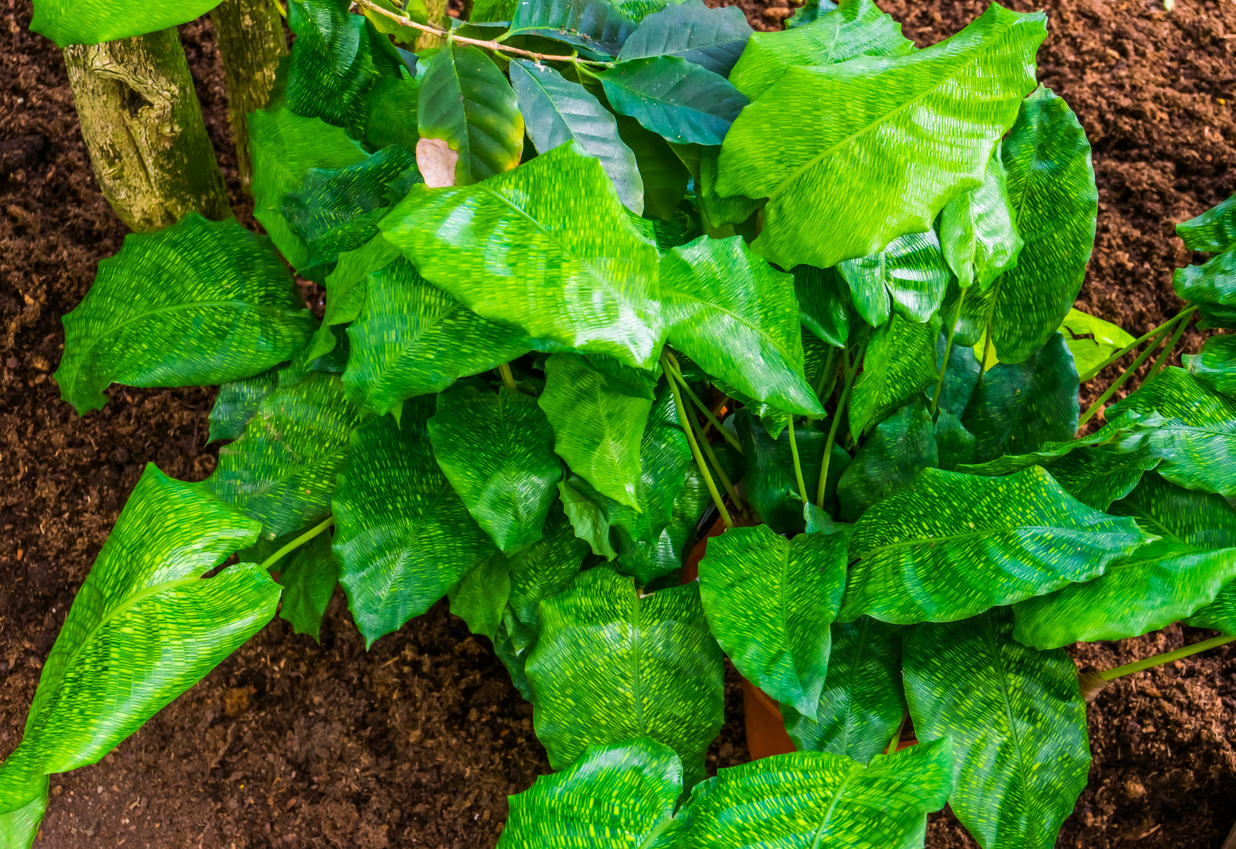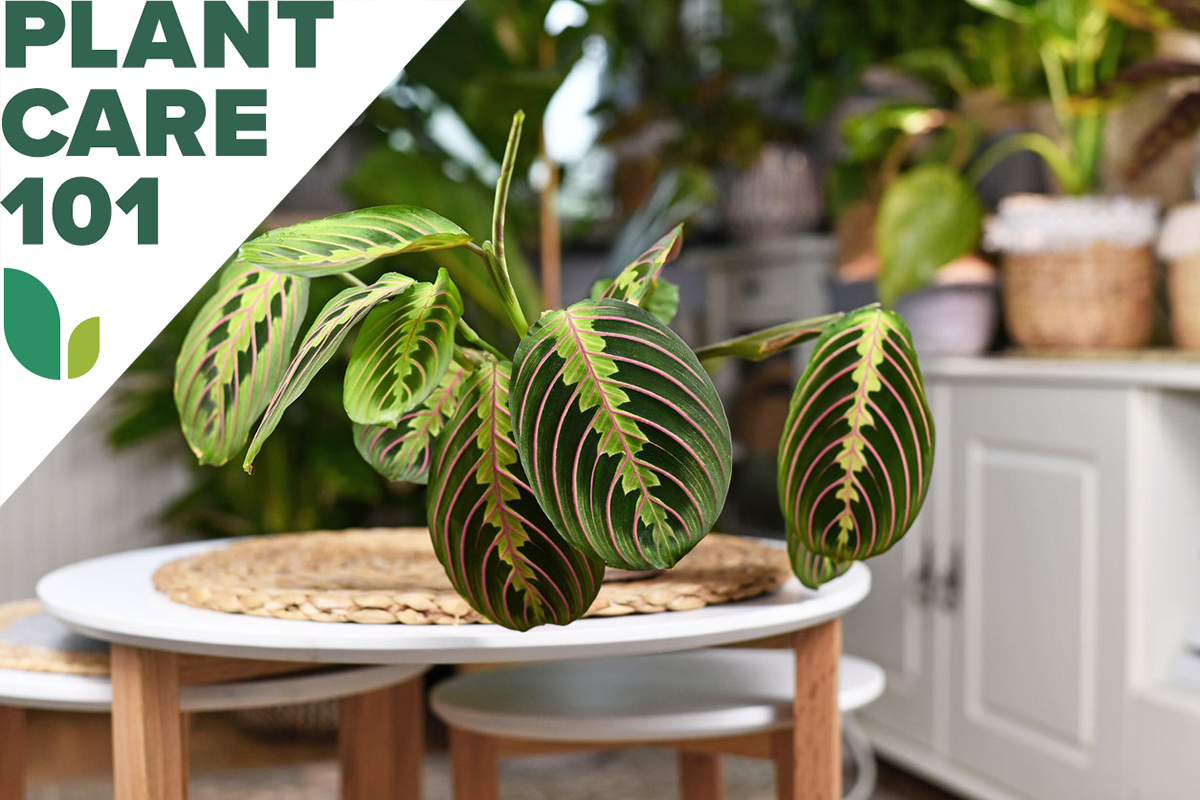We may earn revenue from the products available on this page and participate in affiliate programs. Learn More ›
The common name “prayer plant” covers a wide variety of tropical plants, though it’s most often used to refer to those in the Maranta family. Prayer plants come in many varieties, all of which feature beautiful leaf patterns, making them popular ornamental houseplants around the world. The trouble is, however, they’re not the easiest plants to care for—they have some high-maintenance needs.
Read on to learn about prayer plant care, including soil, light, water, and temperature requirements.
Related: Count On These 25 Indoor Plants for Easy Color Year-Round
Prayer Plant Care at a Glance
Common name: Prayer plant
Scientific name: Maranta leuconeura
Soil: Moist, well-drained, pH 5.5 to 6
Light: Partial shade to full shade
Water: Ensure top layer of soil is damp
Food: Diluted 10-10-10 or 20-20-20 fertilizer
Temperature and humidity: High humidity
Propagation: Root division or water propagation
Safety: Nontoxic
Prayer Plant Characteristics
Prayer plants (Maranta leuconeura) are native to Brazil’s tropical forests, where they grow as perennials. The prayer plant gets its name from its “behavior.” During the day, its leaves lie flat, but at night they rise and fold inward, giving the appearance of praying hands.
When mature, a prayer plant will grow to a height of between 6 and 12 inches and will have 5-inch leaves. The leaves vary in appearance based on the variety, but they typically have bold patterns featuring shades of green, red, and maroon. In its native setting, the prayer plant produces small white flowers during the growing season, but this phenomenon is rarely seen in the houseplants.

Types of Prayer Plants
- Tri-colored prayer plant (M. leuconeura erythrophylla) is the most popular variety of maranta plant available and has bright red veins running through green leaves.
- Rabbit’s Tracks prayer plant (M. leuconeura kerchoveana) has dark green splotches that look like prints made by rabbits’ feet.
- Burle Marxii (Ctenanthe burle-marxii), also known as Fishbone Prayer Plant, has a fishbone pattern and a maroon underside to the leaves.
- Kegeljanii (Goeppertia kegeljanii) features a barely discernible green and yellow mosaic pattern.
- Lemon Lime (M. leuconeura) has a striking green and yellow pattern with raised veins.
Selecting Soil for Prayer Plants
Prayer plants require a well-draining soil because they thrive with frequent watering but are susceptible to root rot due to their delicate roots. They will do well with a commercial potting soil, though you could also make an ideal blend by mixing two parts sphagnum peat moss with one part loamy soil and one part coarse sand.
Since drainage is such a key consideration, it’s prudent to choose a wide, shallow container with sufficient drainage holes and fill the bottom of the planter with rocks. Maranta plants thrive in an acidic soil with a pH of between 5.5 and 6.

The Right Light
Prayer plants are excellent indoor plant choices for the corners of your home that never get direct sunlight. They thrive in moderate indirect light or even in full shade. In fact, if exposed to strong natural light, a prayer plant’s leaves can develop large brown spots and eventually fall off.
During their dormant season, which generally takes place over the winter, a prayer plant’s leaves will often die completely, but this doesn’t mean the plant itself is dead. If provided with bright light, the leaves will likely grow back in the spring.
Watering Prayer Plants
Prayer plant watering schedules are a bit tricky to master because the plants thrive with soil that’s just slightly damp to the touch. They’re not drought resistant and will die quickly if left unattended, so make sure you have someone to water them if you go away for a week. In the growing season—which typically takes place in the summer—ensure the top layer of soil never becomes dry.
Avoid using cold water to water prayer plants. They prefer room temperature water, though slightly warmer water is fine, too. If you notice the plant’s leaves turning yellow, that could be a sign of either overwatering or under-watering.
Related: These Are the Most Popular Houseplants in America
Fertilizing Prayer Plants
Ensure your prayer plant grows and thrives by following a regular fertilization schedule. Prayer plants require fertilization every 2 weeks during their growing season and cut back to once a month while dormant. Opt for a water-soluble fertilizer with a 10-10-10 or 20-20-20 ratio.
Always dilute the formula when fertilizing prayer plants by using half of the recommended amount of fertilizer with the full amount of water. Then use the mixture to water your plant as needed. Be wary of overfertilizing because it can cause the plant’s roots to burn, which can potentially kill it.

Setting the Temperature and Humidity
Since prayer plants have tropical origins, they do best in warm, moist conditions that may be difficult to replicate in your home, which is why the plants have relatively short lifespans when grown indoors in cooler climates. They can survive in standard room temperatures of between 60 and 80 degrees, but they may die if temperatures are consistently at the lower end of that spectrum. Be sure to keep your prayer plant away from air conditioning units and heaters.
To create ideal humidity levels for your prayer plant, place it near a humidifier or put the planter on a tray that’s filled with water and rocks. Make the rock layer thick enough to elevate the bottom of the planter above standing water.
Propagating Prayer Plants
There are two ways to propagate prayer plants: root division and water propagation.
- Propagation via root division should be done at the end of the dormant season. When repotting your prayer plant, untangle the roots and separate the stems. Remove one or more stems and replant them in another container.
- Water propagation can be done at any time of year. Simply cut a stem below a node using clean, sharp scissors. Then place the cutting in a glass of room temperature water so that the nodes are submerged. After between 2 and 4 weeks, the cutting should produce roots and will be ready to plant in soil.
Safety Considerations
Prayer plants are excellent houseplants for pet owners because they’re nontoxic to both cats and dogs. They’re also not toxic to humans, but be sure little ones cannot reach and topple over the planter.
Potential Pests and Diseases
Prayer plants are susceptible to attracting both spider mites and mealybugs. Mealybugs cause the plant’s leaves to curl, and they can be identified by their powdery-white appearance. To remove mealybugs, use a cotton ball dipped in rubbing alcohol to wipe them off the plant’s leaves.
Spider mites leave behind a white webbing and cause leaves to have dry spots. The mites are tiny and black and can be removed by simply rinsing the leaves under running water. Neem oil and other natural insecticides can also eliminate pests on a prayer plant.
Related: The 12 Hottest Houseplants for Your Home Office, According to the Masses

FAQs About Prayer Plant Care
While you’ve learned more about how to care for the prayer plant, you still might have some questions about its maintenance needs.
Q. Does a prayer plant need sun?
All plants require some level of natural light, but prayer plants can survive in low-light conditions.
Q. Where should I place a prayer plant?
Place your prayer plant in a location that does not receive direct sunlight and some distance away from heaters and air conditioning units.
Q. Should I mist a prayer plant?
Because prayer plants like humidity, it’s a good idea to mist it periodically. Use distilled water to avoid hard water spots on the plant’s attractive leaves.
Q. How do I make my prayer plant bushy?
Prune your prayer plant in the spring and fall to encourage bushy growth.
Q. How do I prune a prayer plant?
Prune a prayer plant by using sharp gardening scissors to trim the stems just above a leaf node.
Q. How often should I water a prayer plant?
Water a prayer plant any time you notice the top layer of soil is no longer moist.


